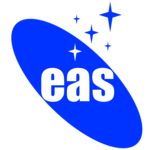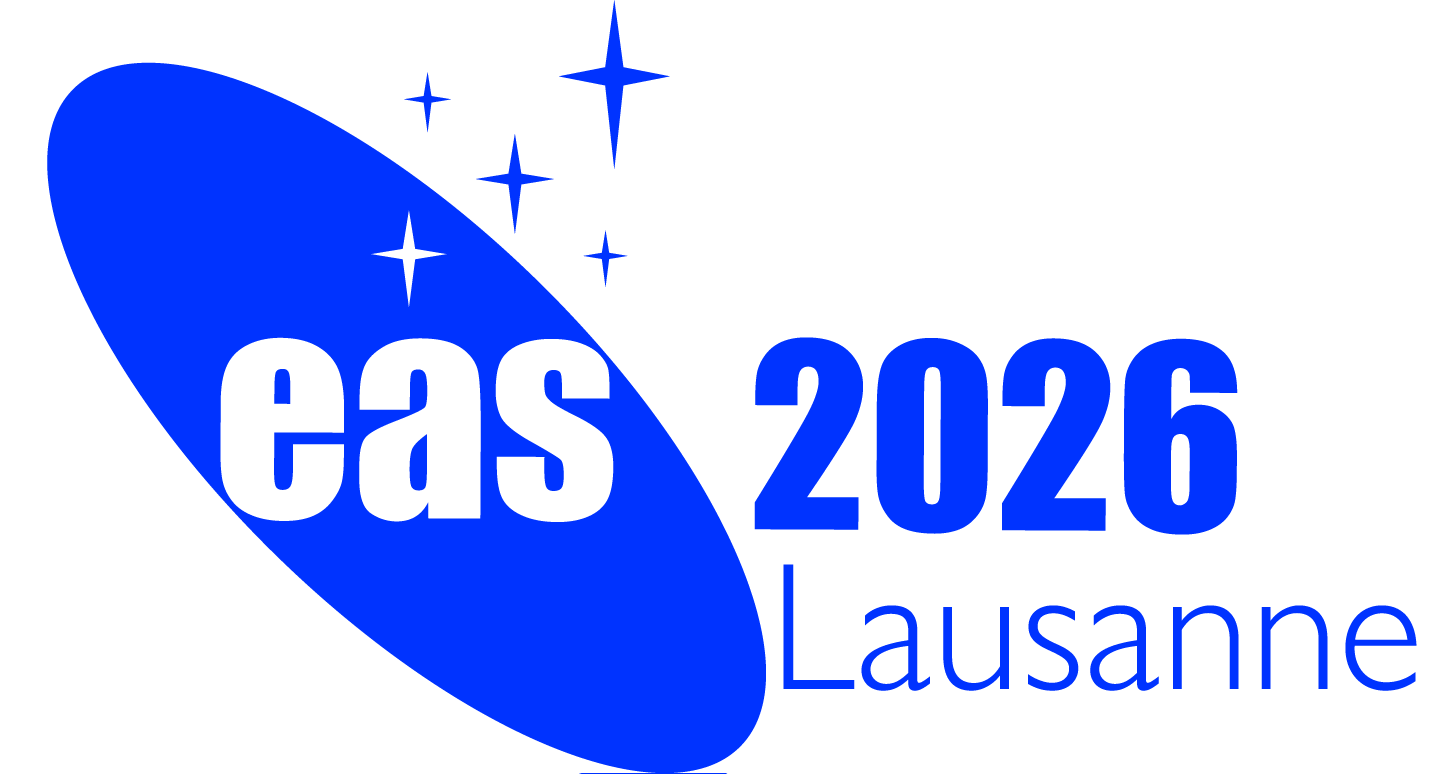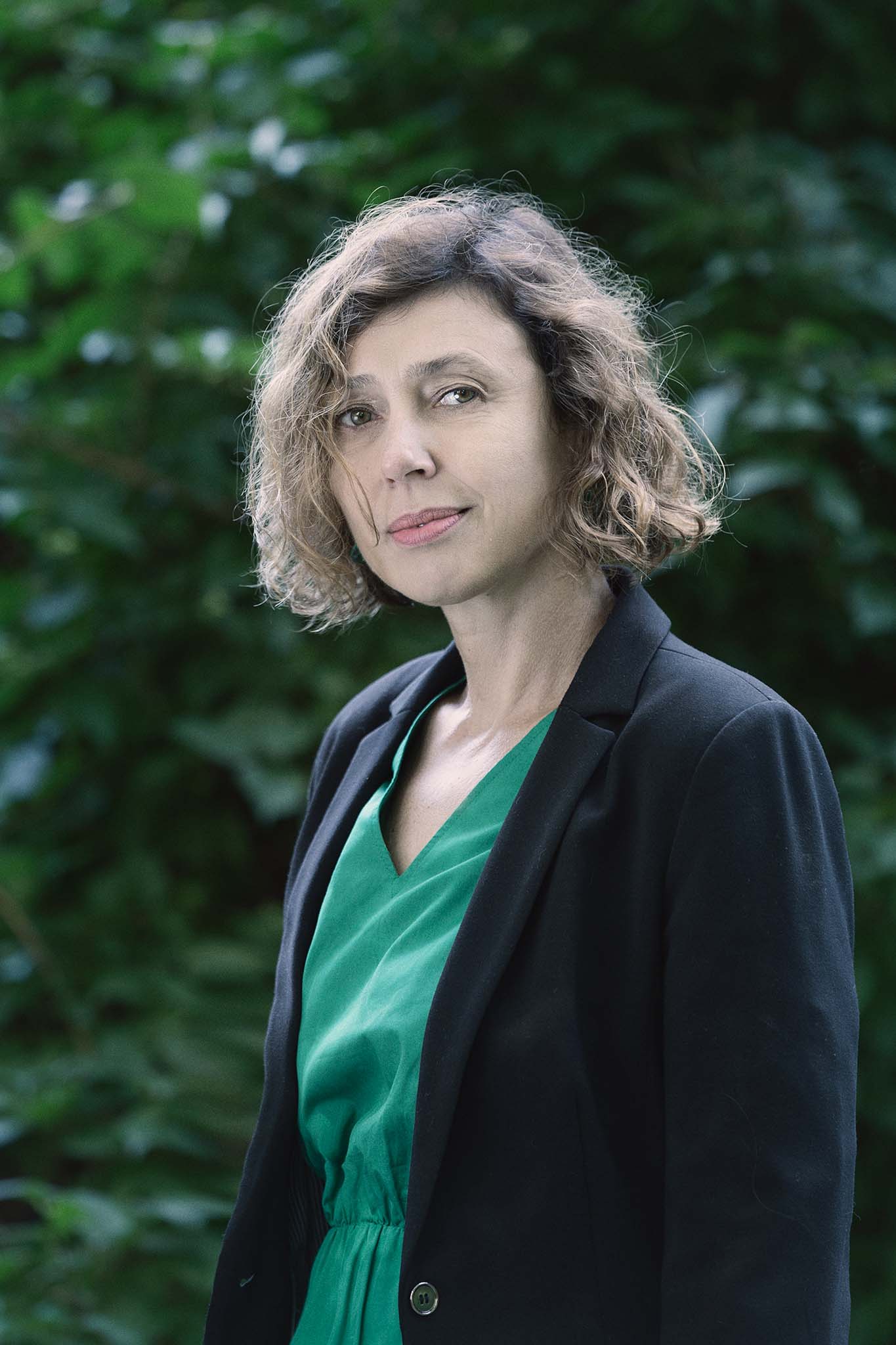
|
European Astronomical Society |

|
About EAS |
Activities
EAS Prizes/Fellows |
Service Centre |
As 2024 draws to a close, I take the opportunity to reflect on what has been a truly busy year for our Society. Following the last elections, the council now has 12 members, reflecting the updated EAS constitution approved in 2022. This growth enhances the Council's capacity to take on a wide range of activities and address the diverse and evolving needs of the European astronomical community. We are also delighted to welcome three new organisational members, AIP, JIVE and NOVA. Organisational members play an important role in securing the financial sustainability of the Society and its activities for European astronomy and we are grateful for their support.
The society has also strengthened its relationship with the African Astronomical Society (AfAS), and we are actively exploring ways to expand this partnership further in the future.
The protection of the Dark and Quiet Sky has remained a central focus in 2024.
▸ Read more
The EAS, together with the affiliated societies, has worked to raise awareness on this topic among policymakers and regulators at both the national and international levels. Our advocacy efforts successfully led to this issue being added to the agenda of the UN Committee on the Peaceful Uses of Outer Space (COPUOS), marking a significant step toward global action. The EAS also signed the ESA Zero Debris Charter, reaffirming our commitment to sustainable practices in space.
Another major success this year was securing funding for three additional years, until 2028, of the HERA program.
Generously supported by the Wilhelm and Else Heraeus Foundation, HERA has, over the past two years, established itself as an important training opportunity for early-career scientists. This renewed funding ensures the program will continue to nurture the next generation of astronomers well into the future.
The EAS Annual Meeting, EAS2024, was another highlight of the year, providing a vibrant platform for scientific exchange and collaboration. Planning for EAS2025 is already well underway, and I look forward to seeing many of you in Cork next year.
As we celebrate these achievements, I look forward to the continued growth and success of the EAS in the coming year. The society remains committed to advancing astronomy in Europe and beyond, through free exchange of scientific ideas and in peaceful collaboration at a global level. At the same time, I would like to extend my heartfelt support and condolences to colleagues who have been negatively impacted by ongoing armed conflicts and geopolitical instabilities, and I stand in solidarity with them.
I wish you and your loved ones a wonderful holiday season and a peaceful 2025, filled with hope and unity.
The EAS Annual Meeting 2025 will be hosted by the University College Cork from June 23 to 27, 2025. The Scientific Organising Committee is co-chaired by Prof. Paul Callanan of UCC and Prof. Matt Redman of the University of Galway. The SOC received a record number of 127 proposals for Symposia, Special Sessions and Lunch Sessions which are currently being evaluated. Registration for the EAS Annual Meeting 2025 will commence in January 2025. A large number of (modern) student rooms on the UCC campus have been blocked for use by participants of the EAS Annual Meeting. Also in Cork the EAS will provide the possibility to participate online.
▸ Read more
We are currently evaluating the hybrid aspect of the EAS Annual Meeting in 2024 in Padova, where all sessions were accessible for online participants. All sessions have been recorded and made available to be viewed up to 3 months after the meeting; only very few people have made use of this service. It is obvious that we cannot offer the same experience to online participants compared to those on site, but our aim is to find an acceptable and affordable compromise for online participation in Cork. You may have noticed that the abstracts at the EAS Annual Meeting 2024 have been registered in the SAO Astrophysics Data System (ADS). We are working to have abstracts from earlier EAS annual meetings soon available in ADS.
The Leibniz Institute for Astrophysics Potsdam (AIP), located in Potsdam, Germany, is a research institution dedicated to astrophysical questions ranging from the exploration of our Sun to the evolution of the cosmos. The key areas of research focus on stellar, solar and exoplanetary physics as well as extragalactic astrophysics and cosmology. A considerable part of the institute's efforts aims at the development of research technology in the fields of spectroscopy, robotic telescopes, and e-science. The AIP is the successor of the Berlin Observatory founded in 1700 and of the Astrophysical Observatory of Potsdam founded in 1874. The latter was the world's first observatory to emphasize explicitly the research area of astrophysics.
▸ Read more
The Institute is located on the grounds of the former Babelsberg Observatory in Potsdam, which began operations in August 1913. Active external facilities include the Einstein Tower Solar Observatory on the Telegrafenberg in Potsdam, the antenna field for radio astronomical observations LOFAR near Bornim, and the robotic STELLA Observatory on Tenerife.
Additionally, the AIP maintains the historic Great Refractor on the Telegrafenberg as a scientific heritage site and for public outreach purposes. The Institute is involved in the design, development, construction, operation and scientific exploitation of a number of large-scale astrophysical projects to achieve its research objectives. As the consortium leader for the development of the 4-metre Multi-Object Spectroscopic Telescope (4MOST) of the European Southern Observatory (ESO) in Chile, the AIP continues to develop and plan cutting-edge instruments in the field of astrophysics. The AIP is also involved in the construction of the two spectrographs, ANDES and MOSAIC, for ESO's Extremely Large Telescope (ELT).
For over 30 years, the Joint Institute for VLBI (JIVE) has been leading the development and use of Very Long Baseline Interferometry (VLBI) and other radio astronomy techniques. In 2014, JIVE became the first European Research Infrastructure (ERIC) dedicated to astronomy. It coordinates the radio telescopes of the European VLBI Network (EVN), correlates their data, and supports astronomers using the EVN throughout their research, from proposal ideas to data reduction. JIVE's presence at EAS meetings has grown in recent years, with its booth drawing strong interest from across the astronomy community, enabling conversations that provide valuable insights into JIVE's innovative research and contributions to the field.
▸ Read more
As a key radio astronomy institute in Europe and the central organisation of the European VLBI Network, JIVE's partnership with the EAS is a natural and exciting next step.
This collaboration reinforces our shared commitment to advancing impactful science across Europe and beyond. We look forward to the opportunities this partnership will bring, as we work together with JIVE to connect, innovate, and deepen our understanding of the universe.
NOVA, the Netherlands Research School for Astronomy, is the alliance of the universities of Amsterdam, Groningen, Leiden and Nijmegen. In NOVA, the astronomy institutes at these four institutes jointly coordinate their research into one coherent and focused program, forming a single "virtual"; institute. NOVA's mission is threefold: 1) to carry out astronomical research at the highest international level; 2) to train the next generation of astronomers; and 3) to share our discoveries with society. NOVA received its first funding as a "top research school"; from the Netherlands ministry of education in 1999, and so is celebrating its 25th anniversary this year. In 2023, NOVA was made permanent with continued funding. The NOVA program has three main components: research, instrumentation and public outreach.
▸ Read more
The research program is carried out by approximately 350 scientific staff members, including PhDs and postdocs, distributed across the four universities. NOVA's research program is organized into three networks across the institutes. Network 1 focuses on cosmology and galaxy evolution. Network 2 on stellar evolution, including the formation of circumstellar disks and planets. Finally, Network 3 studies massive compact objects, such as neutron stars and black holes.
NOVA invests in instrumentation development as a means of achieving their scientific goals. Around 45 highly qualified technical staff are organised into two instrumentation groups: The Optical-IR instrumentation group hosted by ASTRON in Dwingeloo, and the Sub-mm instrumentation group at the University of Groningen. The Optical-IR group has been a key partner in many projects for the VLT, such as X-shooter, Sphere-Zimpol and MATISSE, and is now working on the ELT projects METIS, MICADO and MOSAIC. The Sub-mm group has led the development and production of the receivers for ALMA Band 2, 5 & 9. The NOVA Information Centre, with 4 staff located at the university of Amsterdam, disseminates astronomy knowledge and news to a wide audience, through the website astronomie.nl, press releases and with their mobile planetaria. NOVA is managed from the NOVA Office at Leiden University. More information on NOVA can be found at nova-astronomy.nl. The figure shows a rendering of the METIS instrument. NOVA is the PI institute of METIS, the mid-infrared ELT imager and spectrograph, currently under construction.
In this e-Newsletter we start a section with some brief news from our sister national societies. We aim at including in this section a couple of news items that will allow the EAS community to get to know one another. The editors welcome any comments and suggestions from EAS members. In the starting piece we present two news bits from the Royal Astronomical Society of the United Kingdom (RAS) and the Hellenic Astronomical Society (Hel.A.S.).
▸ Read more
The RAS is the oldest astronomical society in the world, founded in 1820 with the aim of promoting the study of astronomy, solar system science, geophysics and related branches of science. This year, the RAS celebrated 150 years at Burlington House, the official site of the RAS in central London. An open house festival was held in September, celebrating the event that included a visit to the library with some of its treasures on display: observation notebooks of Caroline and John Herschel, or a first edition of Newton's "Principia". The event included the presence of the Herschels themselves (actors of course !), and was attended by hundreds of people. This event coincides with the great news that the lease of Burlington House has been extended for another 999 years (!) allowing the RAS to keep such an iconic site. More information can be found at the
RAS webpage.
The Hellenic Astronomical Society was formally established in 1993 and serves the Greek astronomical community with events, meetings, travel grants and prizes for students, etc. In recent years there has been a significant upgrade of National Facilities, including the Helmos Observatory (2.3m Aristarchos telescope) and Skinakas Observatory (1.23m), to name the two largest ones, while three radio astronomy facilities are currently under construction. Every two years, the Society hosts a thematic Summer School to provide scientific training for its younger members, including graduate students and early-career postdoctoral researchers. This September, in collaboration with the University of Ioannina (UoI), Hel.A.S. organized the 5th Summer School entitled: "Magnetohydrodynamics in Astrophysics". More information about the society can be found at the
Hel.A.S. webpage . The next major event is the 17th Hel.A.S. Conference, which will take
place in Patras, Greece, from 30 June to 2 July 2025.
The second "WE Heraeus - EAS Early Career Researchers in Astronomy Workshop" (HERA24) took place in the week of September 22nd till 27th at the Academy of Athens in Athens, Greece.
The topic was "The Nature and the Dynamics of Structures Observed in Galactic Disks". The workshop was again targeted to young European researchers, with the idea of fostering interaction and promote interest in shaping the future of European astronomy. Like HERA23, each day started with a lecture by a senior scientist, followed by talks of the participating scientists. The social program allowed the participants to visit local astronomy and archeological sites. The workshop was very successful, provided an atmosphere of exciting exchange of ideas and gave a platform for future collaborations.
▸ Read more
Given the success of HERA23 (Garching) and HERA24 the Wilhelm and Else Heraeus foundation has agreed to provide 120,000 Euros to extend the workshop series beyond 2025 till 2028. HERA25 with the topic of "Galaxy evolution in the cosmic re-ionisation era" is now in planning and will take place in the week of September 22-26, 2025 in Pisa, organised by the Scuola Normale Superiore. More information about the workshop, including registration, will be available on the EAS website soon. We are also starting the planning of HERA26, which will take place in Warsaw.
About the EAS and the e-NewsletterThe European Astronomical Society (EAS) is a society of professional astronomers founded in 1990 and aiming at promoting and advancing astronomy in Europe. Its contact point is the EAS Office, located at the University of Geneva, Switzerland. Started in 2016, the e-Newsletter is a prime communication tool between the society and its members, and it is issued three to four times per year.
|
Composition of the EAS Council
|
 If you would like to contribute, please contact
If you would like to contribute, please contact